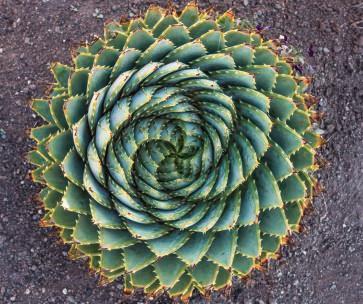






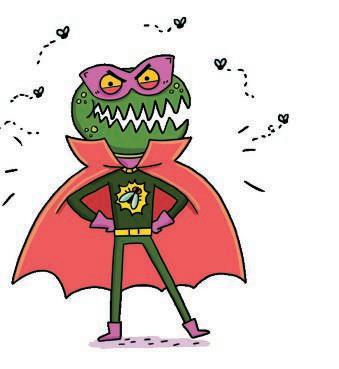
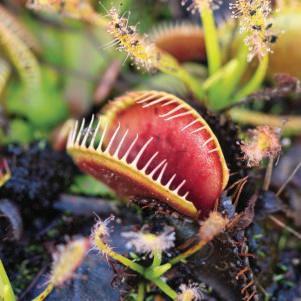
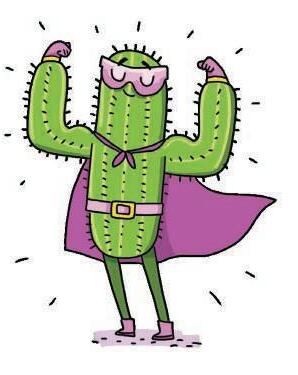
branch NOUN (page 27, 31)
a part that sticks out from the trunk of a tree
cause VERB (page 30, 32)
To cause something is to make it happen.
deliberately ADVERB (page 26) on purpose
familiar ADJECTIVE (page 13)
If you are familiar with something, or it is familiar to you, you know about it.
In this book …
Wild world
Our shared planet
Inventions and ideas
mini ADJECTIVE (page 39) very small pollution NOUN (page 28, 29, 55) dirt or damage in the air, water or soil
store VERB (page 38)
To store things is to keep them until they are needed.
valuable ADJECTIVE (page 10) worth a lot of money or very useful
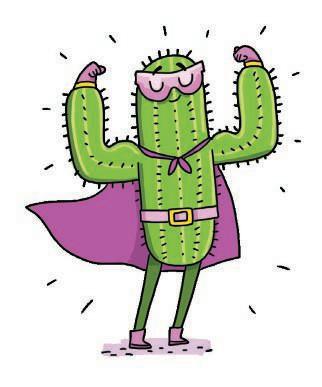

Great Clarendon Street, Oxford, OX2 6DP, United Kingdom
Oxford University Press is a department of the University of Oxford. It furthers the University’s objective of excellence in research, scholarship, and education by publishing worldwide. Oxford is a registered trade mark of Oxford University Press in the UK and in certain other countries
Text © Oxford University Press 2024
Illustrations © Richard Watson 2024
The moral rights of the author have been asserted
First Edition published in 2024
All rights reserved. No part of this publication may be reproduced, stored in a retrieval system, or transmitted, in any form or by any means, without the prior permission in writing of Oxford University Press, or as expressly permitted by law, by licence or under terms agreed with the appropriate reprographics rights organization. Enquiries concerning reproduction outside the scope of the above should be sent to the Rights Department, Oxford University Press, at the address above.
You must not circulate this work in any other form and you must impose this same condition on any acquirer
Every effort has been made to contact copyright holders of material reproduced in this book. Any omissions will be rectified in subsequent printings if notice is given to the publisher.
Cover: Gil.K/Shutterstock; Bpk Maizal/ Shutterstock; Leah-Anne Thompson/Shutterstock
British Library Cataloguing in Publication Data
Data available
ISBN: 978-1-382-04367-0
10 9 8 7 6 5 4 3 2 1
The manufacturing process conforms to the environmental regulations of the country of origin.
Printed in China by Golden Cup.
Acknowledgements
SuperheroPlants and SuperplantstotheRescue
written by Victoria Honeybourne
Content on pages 7, 64, 66 and 70 written by Suzy Ditchburn
Illustrated by Richard Watson
Author photo courtesy of Victoria Honeybourne
Photos: p13 (tl): Gil.K/Shutterstock; p13 (tr): romiri/Shutterstock; p13 (ml): 123RF; p13 (mr): Amy Tseng/Shutterstock; p13 (bl): iamoat/ Shutterstock; p13 (br): pryzmat/Shutterstock; p14: Brian Maudsley/Shutterstock; p18 (a): Olga Miltsova/Shutterstock; p18 (b): copperman/ Shutterstock; p18 (c): FineShine/Shutterstock; p18 (d): Enlightened Media/Shutterstock; p18 (e): Suwan Wanawattanawong/Shutterstock; p18 (f): Scisetti Alfio/Shutterstock; p18 (g): Oliver Hoffmann/Shutterstock; p18 (h): TATSIANAMA/ Shutterstock; p19 (t): Goinyk Production/ Shutterstock; p19 (b): Brandon B/Shutterstock; p20 (r): pisitpong2017/Shutterstock; p20 (l): raker/ Shutterstock; p21 (t): Triff/Shutterstock; p21 (b): A. Laengauer/Shutterstock; p22: Gorodenkoff/ Shutterstock; p23 (l): Temduang/Shutterstock; p23 (r): Chaikom/Shutterstock; p24 (l): karamysh/ Shutterstock; p24 (r): SKT Studio/Shutterstock; p24 (b): Robert Babczynski/Shutterstock; p25: muratart/ Shutterstock; p26 (l): New Africa/Shutterstock; p26 (r): Ekkalak Ngamjarasvanij/Shutterstock; p29: Vovatol/Shutterstock; p30: Philip Bird LRPS CPAGB/ Shutterstock; p31: Chad Zuber/Shutterstock; p32: NadyGinzburg/Shutterstock; p33: Dudarev Mikhail/Shutterstock; p37: wiraiwan sanchana/ Shutterstock; p38 (t): Thomas Barrat/Shutterstock; p38 (b): apiguide/Shutterstock; p39: Denys R/ Shutterstock; p40: JustinDutcher/Shutterstock; p41: Luiza A. Giannelli/Shutterstock; p43: ozalpvahid/ Shutterstock; p44: Maren Winter/Shutterstock; p45: TKalinowski/Shutterstock; p49: MountainHardcore/ Shutterstock; p50 (t): Kevin Schafer/Alamy Stock Photo; p50 (l): Robert Buchel/Shutterstock; p50 (r): Bpk Maizal/Shutterstock; p52 (t): Dr Morley Read/Shutterstock; p52 (b): Eko Budi Utomo/ Shutterstock; p55: blew_s/Shutterstock; p55 (br): Tatiana Grozetskaya/Shutterstock; p57: WESTOCK PRODUCTIONS/Shutterstock

Written by Victoria Honeybourne
Illustrated by Richard Watson


Read this book if … you like
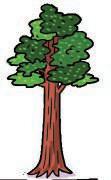


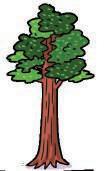


This book is full of facts about fascinating and life-saving plants.
Do you know any ways that plants could save lives?




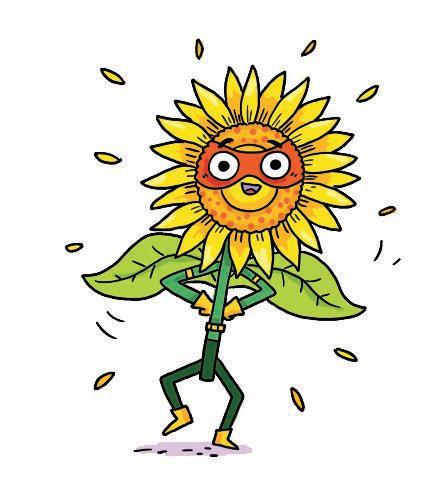
Plants are the superheroes of our world. They provide shelter and food for millions of animals. We also get life-saving medicines and many valuable materials from plants.
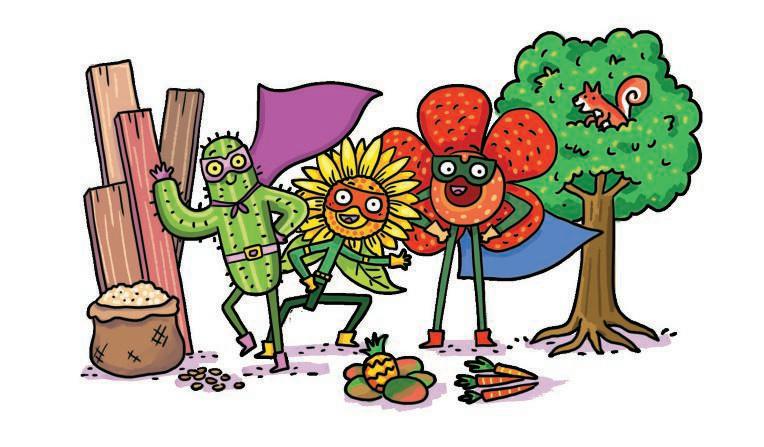

Plants ha ve amazing amaz ng superpowers!
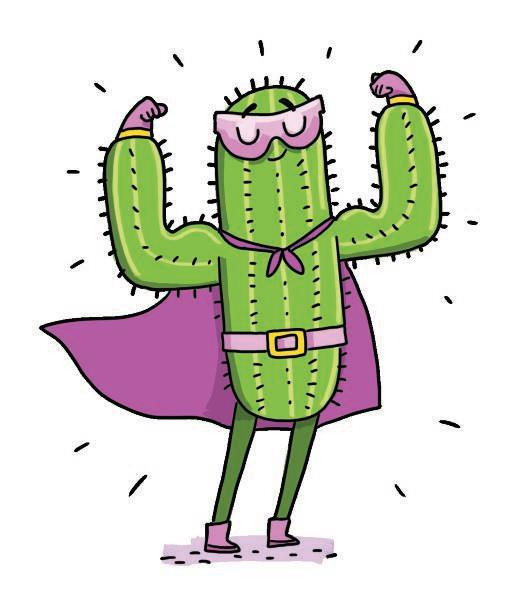
THINK ABOUT IT!
Do you think humans could survive without plants?
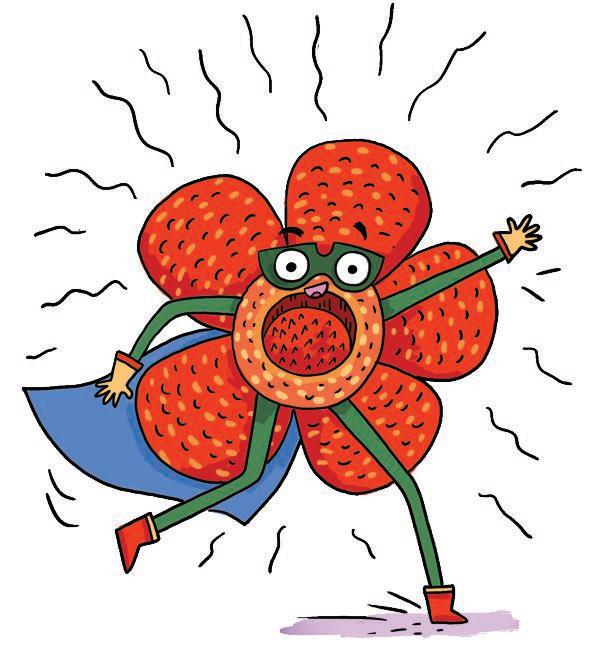
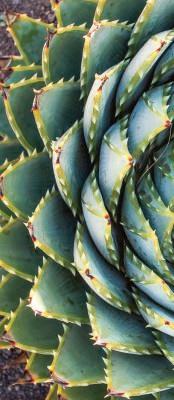
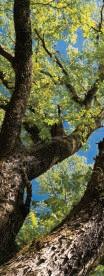
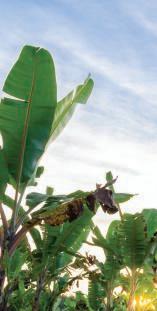
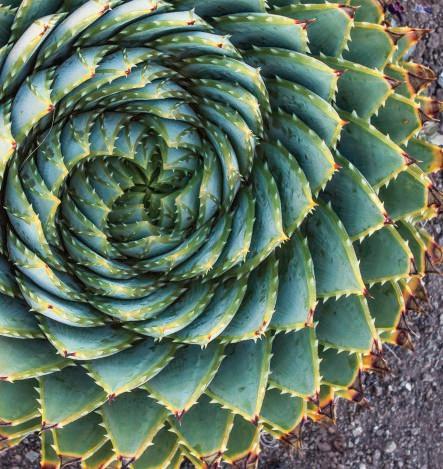


A plant is a living thing that cannot move from place to place.
Most plants need water, sunlight and air to survive.

Some plants on this page might look familiar to you. You may not know all of them, though!

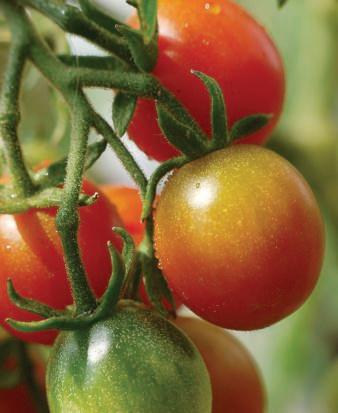

The very first plants on Earth grew in water. Experts think that plants started to grow on land around 500 million years ago.

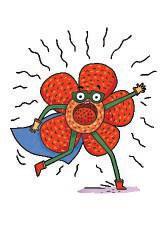



There are about 400 000 known species of plant on
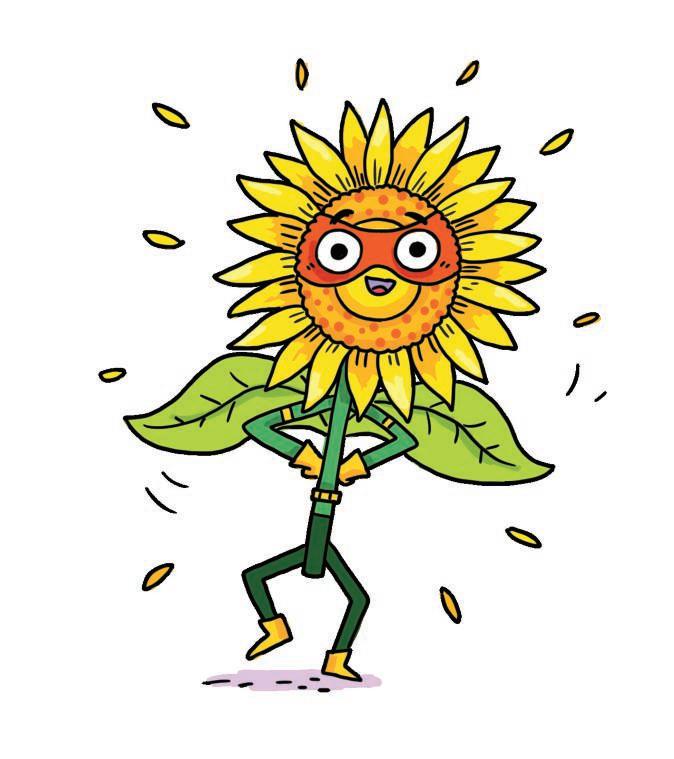
MISSION: To feed the world
SUPERHEROES: Edible plants
? ? ? ? ? ? ? ? ? ? ?
Most food and drink comes from plants.
Turn over to see …

carrots, yams, onions


pears, mangoes
hazelnuts, pine nuts
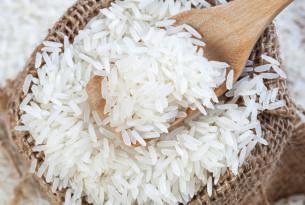

pumpkin, sunflower
rice, wheat, maize
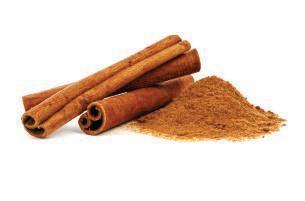
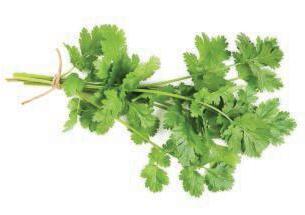
mint, coriander, basil
vanilla, cinnamon
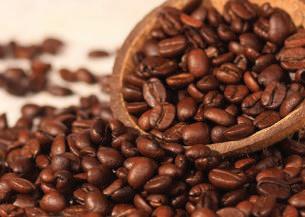
tea leaves, coffee
beans, fruit juices
Many animals get their food from plants, too.

Giant pandas eat bamboo.

Sea urchins munch on seaweed.
Mission: To cure illness
Superheroes: Periwinkles and willows
Modern medicines help treat many serious diseases. Many originally came from plants.
Vinblastine comes from the Madagascar periwinkle. We use it to treat cancer.

Vinblastine

Madagascar periwinkle
Aspirin can reduce the risk of heart attacks. It originally came from the bark of a willow tree.
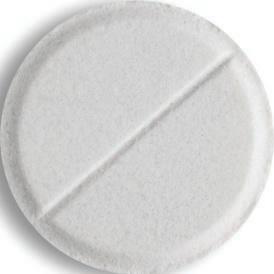
tree aspirin
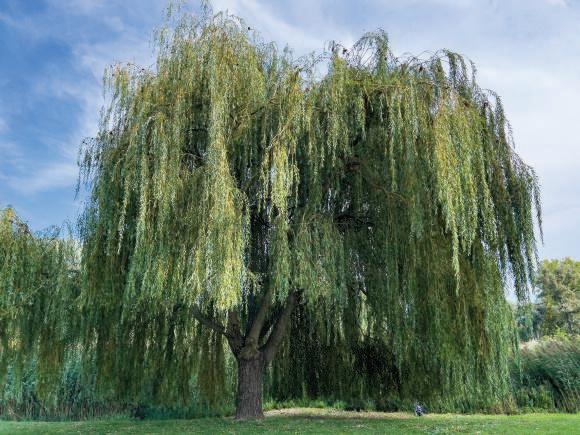
Today, scientists can make aspirin and other medicines in a laboratory. Without plants though, we wouldn’t have these miracle medicines.


MISSION: To provide everyday items
SUPERHEROES: Trees and cotton
Paper comes from trees. Logs are CRUSHED into small bits. These are mixed with water to create wood pulp. Then the water is squeezed out. The pulp is rolled out to make paper!

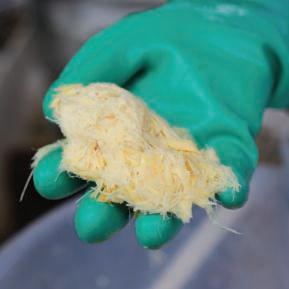
This book is made from trees!
We also use wood from trees to make furniture, fences and many other things.
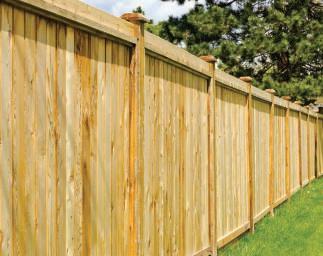
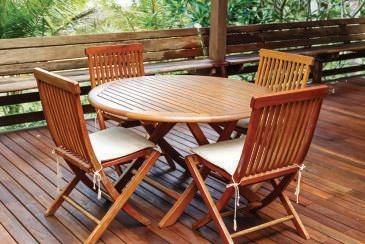
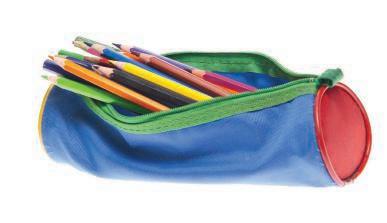
Cotton grows on cotton plants. Cotton is used to make things like clothing, sheets and carpets.

cotton plant
Tell someone about the most important fact you’ve read so far.
MISSION: To provide homes
SUPERHEROES: Trees and bamboo
Trees and bamboo are used to build homes around the world. They are sustainable building materials. This is because we can deliberately plant more trees and bamboo. These new plants replace the ones we used.
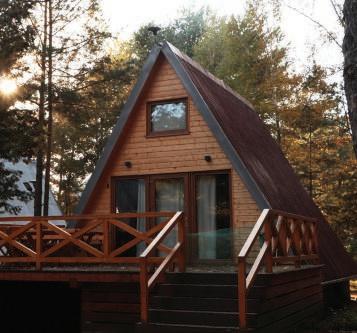
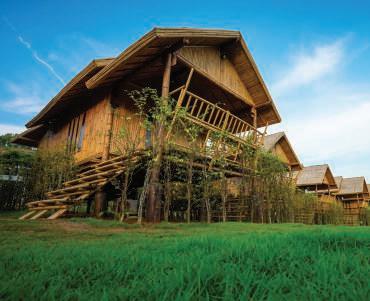
Most animals rely on plants for a place to live, too.
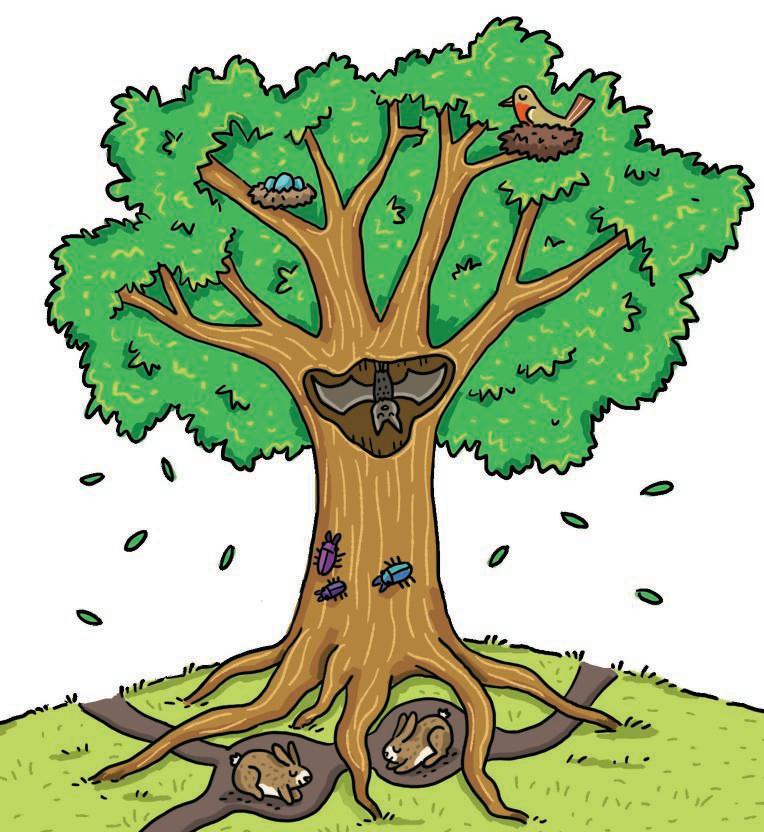
bats roost in holes
beetles shelter under bark
rabbits live in roots
MISSION: To remove radioactive pollution
SUPERHEROES: Sunflowers
a
up
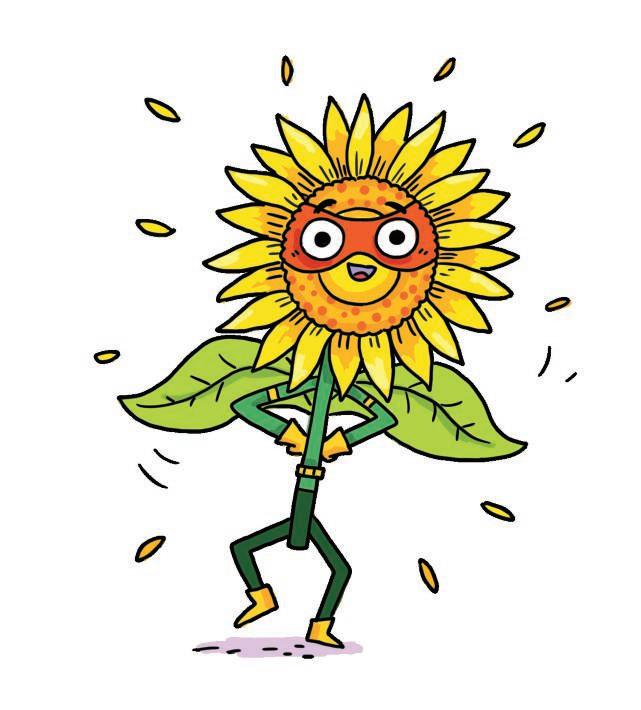
In 1986, there was an explosion at a nuclear power plant in Chernobyl in Eastern Europe. This created radioactive pollution.
Afterwards, fields of sunflowers were planted nearby. The sunflowers moved poisonous chemicals from the soil into their stems and leaves. This helped to clear radioactive waste from the soil.

MISSION: To prevent flooding
SUPERHEROES: Trees
OO DI N G is a serious problem.
Heavy rainfall can cause rivers to overflow. Then the W AT E R can build up into a flood.
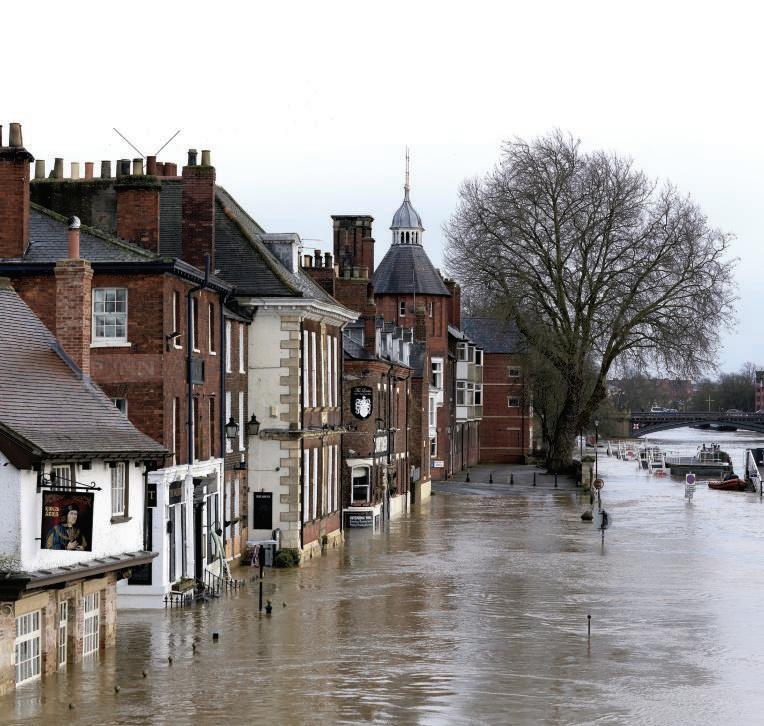
Trees help to prevent flooding. First, leaves and branches catch some of the rainwater. Then the tree’s root system takes the water down into the ground.
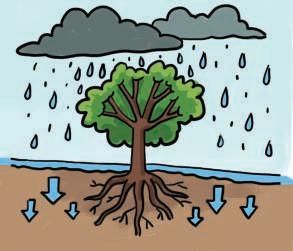
root system
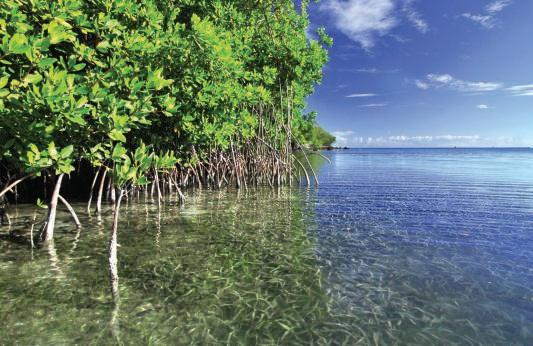
Mangrove trees help to stop flooding. They grow by the sea in hot places.
MISSION: To save the planet
SUPERHEROES: All plants!
A lot of the power we use comes from burning fossil fuels.
When fossil fuels are burned, they release carbon dioxide into the air.
Extra carbon dioxide in the air is causing the planet to warm up. This is called global warming.
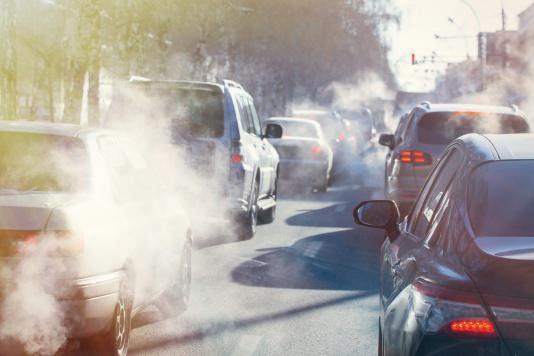
Plants and trees help to fight global warming. They take in carbon dioxide from the air.
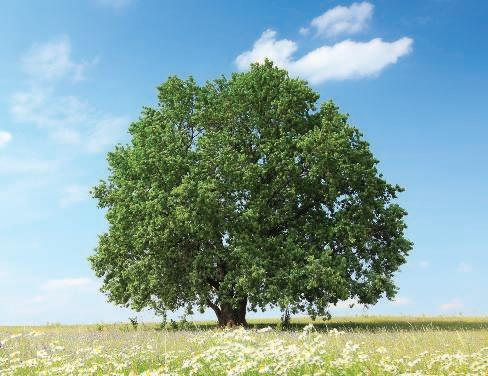
Plants also release oxygen into the air. Humans and animals need oxygen to breathe.
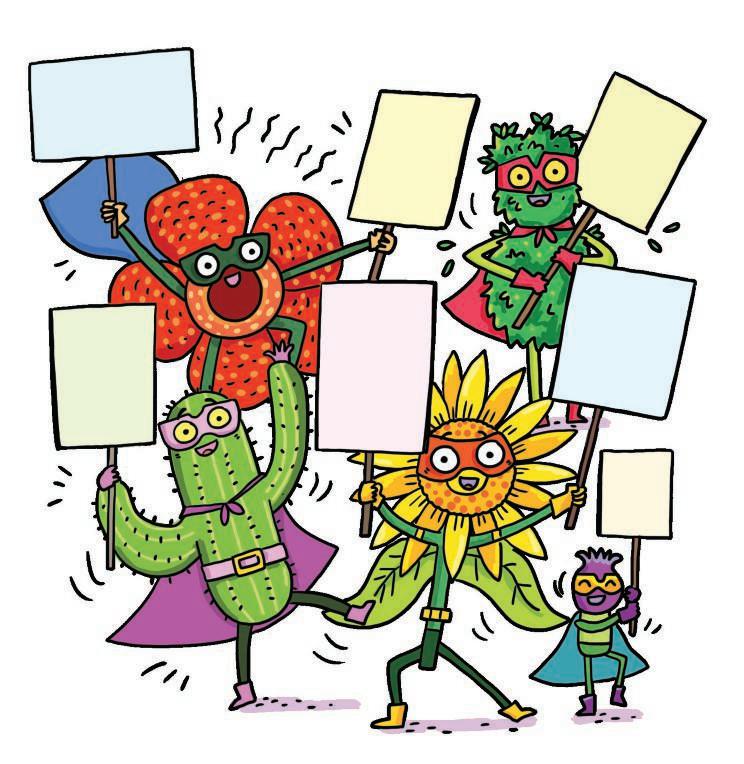
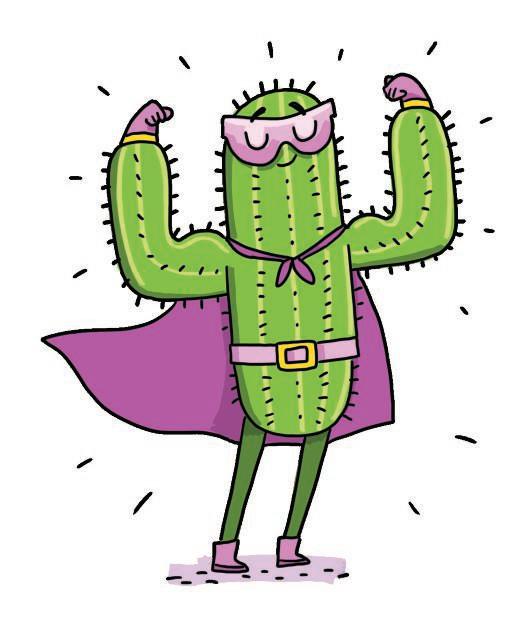
Many plants are very good at adapting. This means changing in order to survive. Adapting is a plant superpower!
In the desert, plants have adapted so they can grow with little water.
Some have extra-long roots to reach water deep underground.
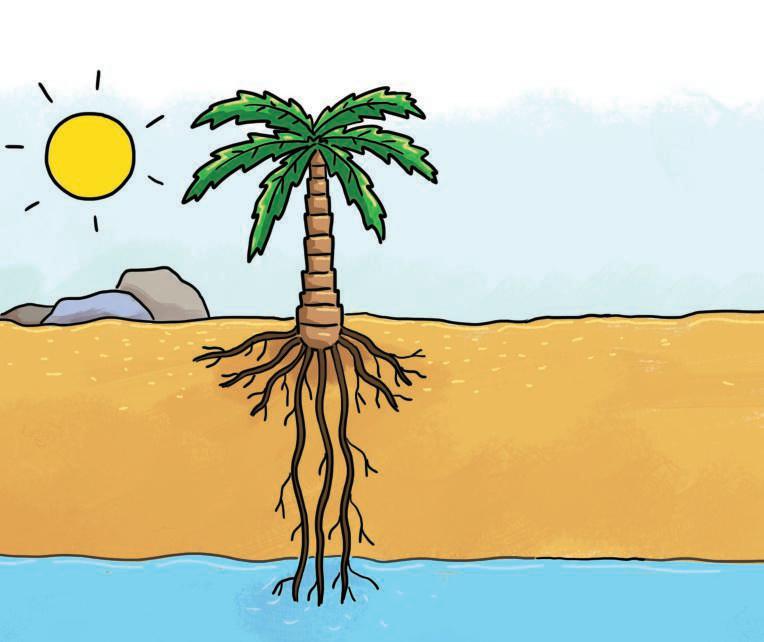
Others spread their roots extra-wide. They catch as much water as possible when it eventually rains.
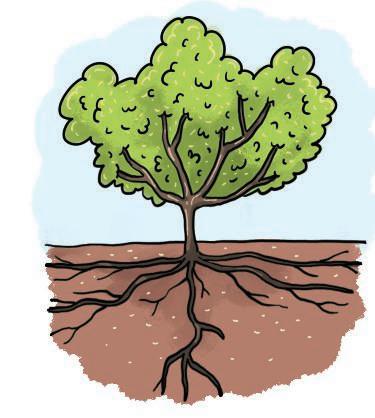
Instead of leaves, cactus plants have white prickly spines. These reflect sunlight away from the plant. This stops them losing water.

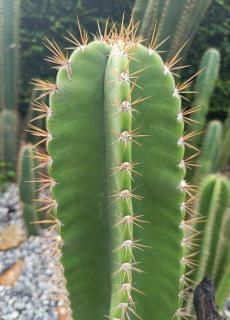
The stems of a cactus plant are full of water. The plant stores the water. This helps it when it doesn’t rain for a long time.

In the rainforest though, it rains a lot.
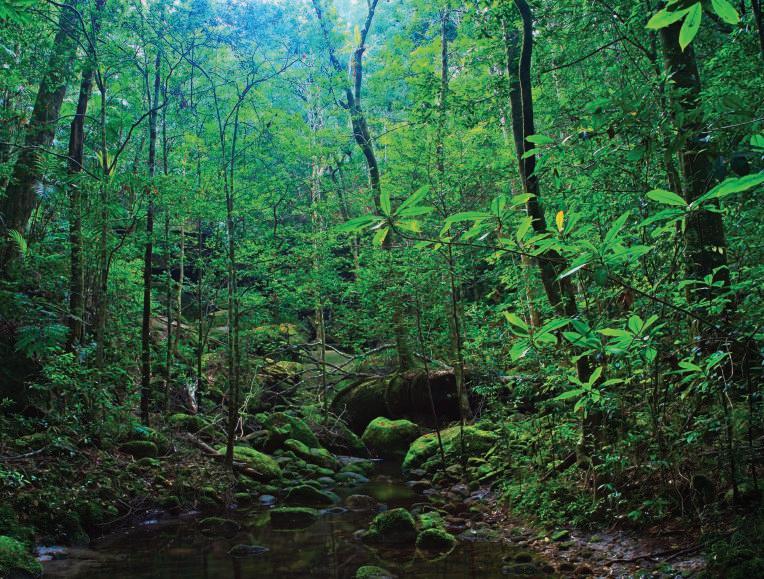
Over half of the world’s plant species live in the rainforest! FACT!

Many tropical leaves are waxy with mini gutters down the centre. Water runs away down the gutters. Then the leaves don’t go mouldy.
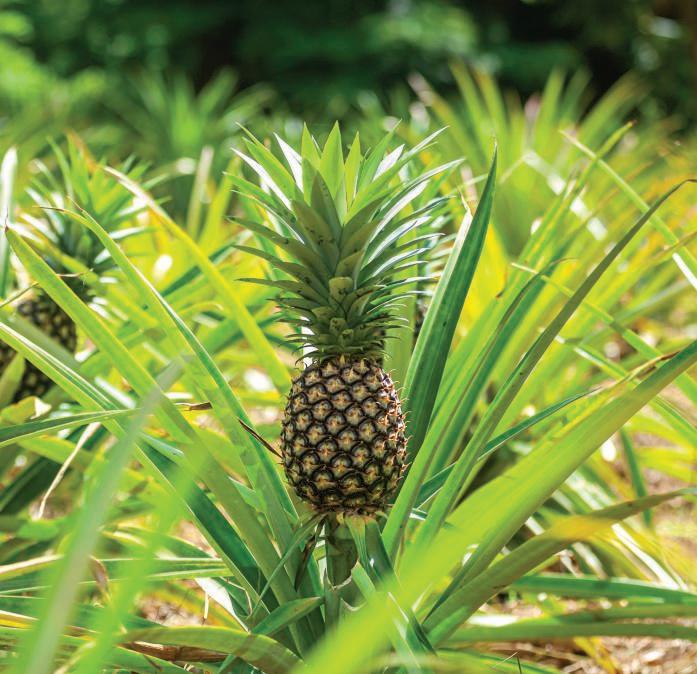
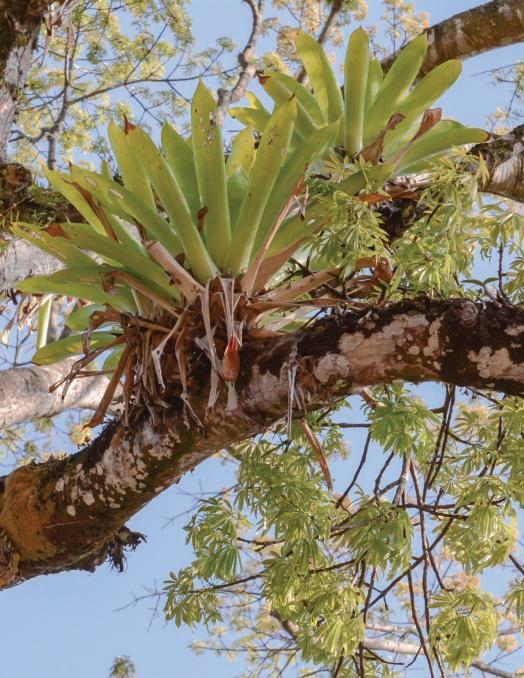
This means their roots are in the air. Their roots get water from the air, not from the soil!
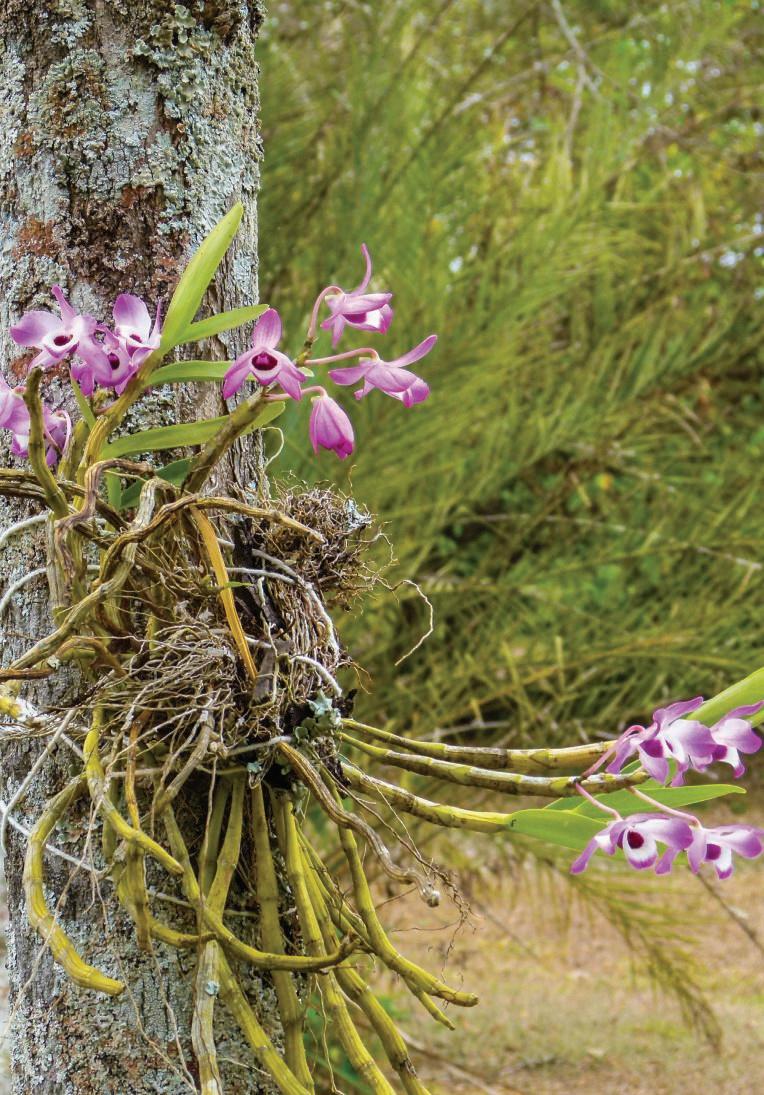

Plants can’t run away from danger. Many plants have developed clever ways to protect themselves. Some have spiKes or hairs for protection.

Many contain chemicals that can make people or animals very ill.

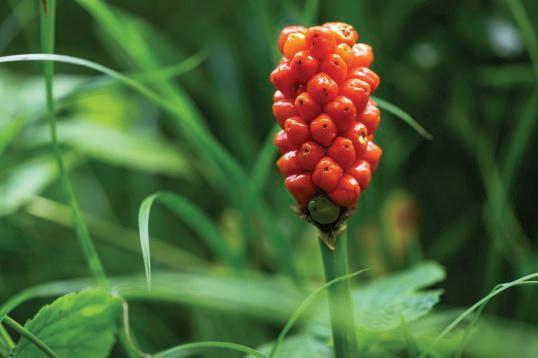

Some plants live near water.
Water can wash the food they need away from their roots.
So some plants catch insects for food instead!

The Venus flytrap has folded leaves lined with tasty nectar.
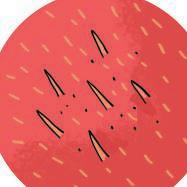
SNAP! The leaf shuts quickly. 1 2 3 4 5 46
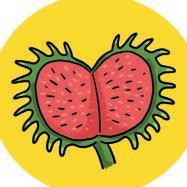
The leaves are covered with very sensitive hairs.
The hairs sense when an insect lands on the leaf.


The leaf fills with liquid. This melts the insect.
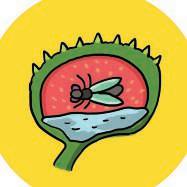

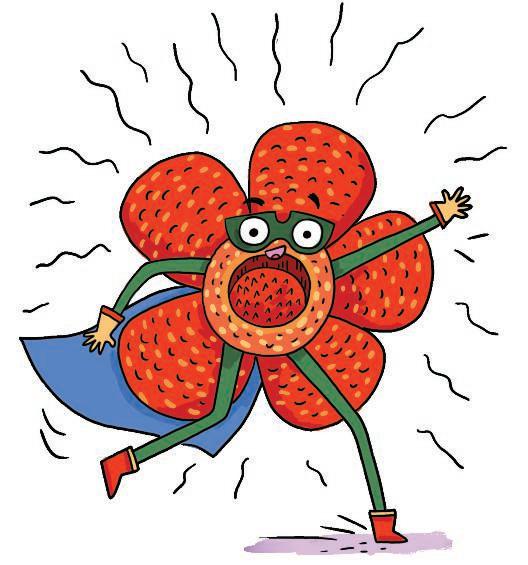
RECORD: Tallest plant
This redwood tree in California is over 100 metres (m) tall!
That’s taller than many famous tall buildings.
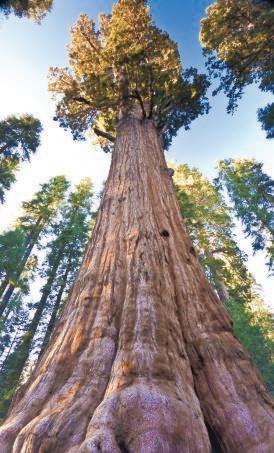




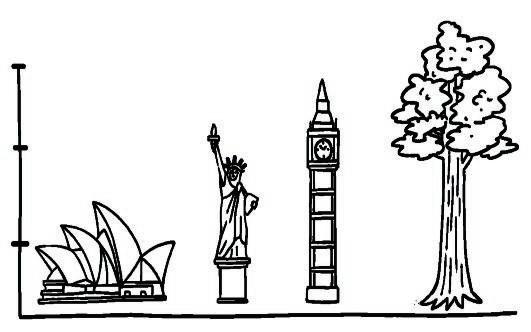
RECORD: Oldest growing tree
Experts think this tree in Chile is more than 5000 years old!
Patagonian cypress tree
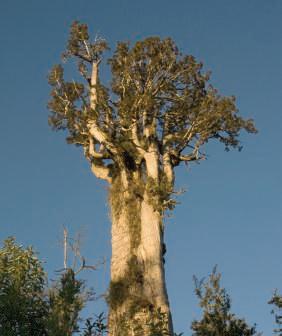
RECORD: Smelliest plants
The Rafflesia (say: ra-flee-zuh) and Titan arum plants have big flowers. The flowers stink of rotting flesh!
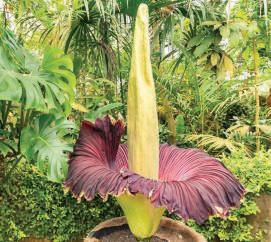
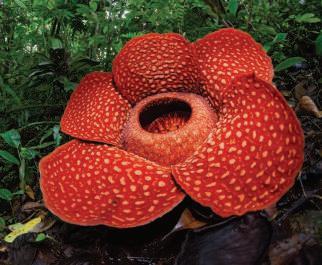
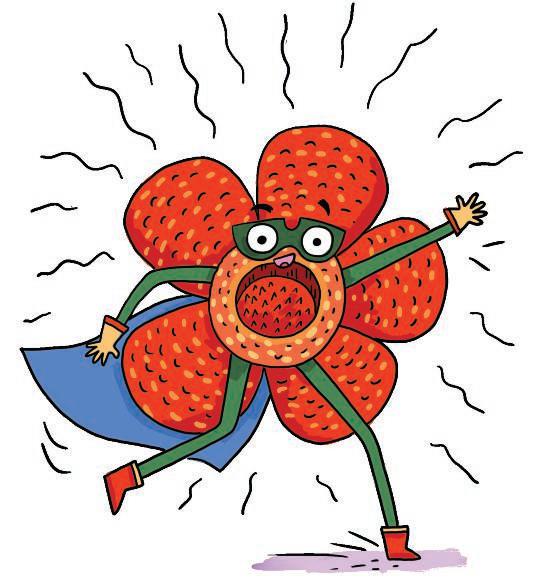
Tell someone about a favourite fact you’ve learned so far.
RECORD: Slowest-growing plant
Some lichen (say: ligh-cun) can take ten years just to reach the size of a coin!
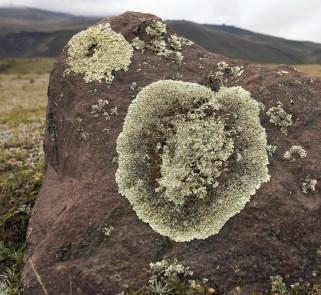
RECORD: Fastest-growing plant
Giant bamboo can grow almost one metre a day! That’s the height of a four-year-old.
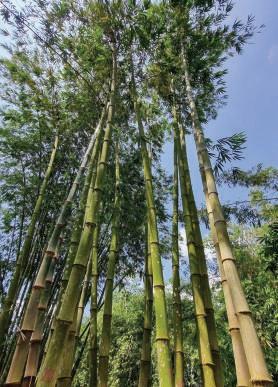
? ? ? ? ? ? ?? ?
SAMPLE
Plants are the superheroes of our planet. We couldn’t survive without plants!
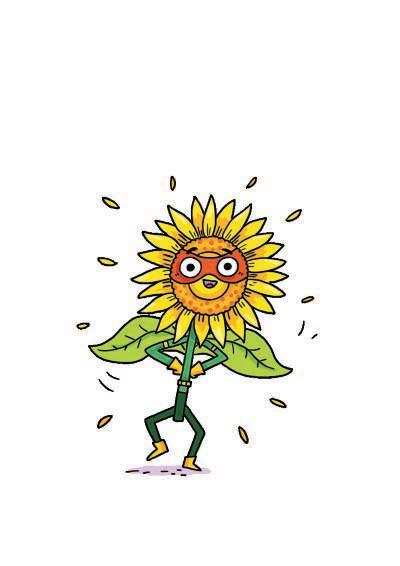
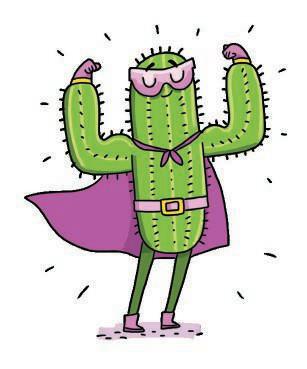
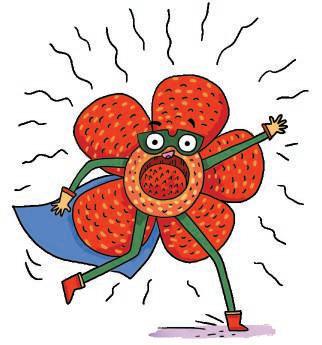
People CUT DOWN trees to make way for farms, roads and towns. Pollution from factories and cars also harms plants.
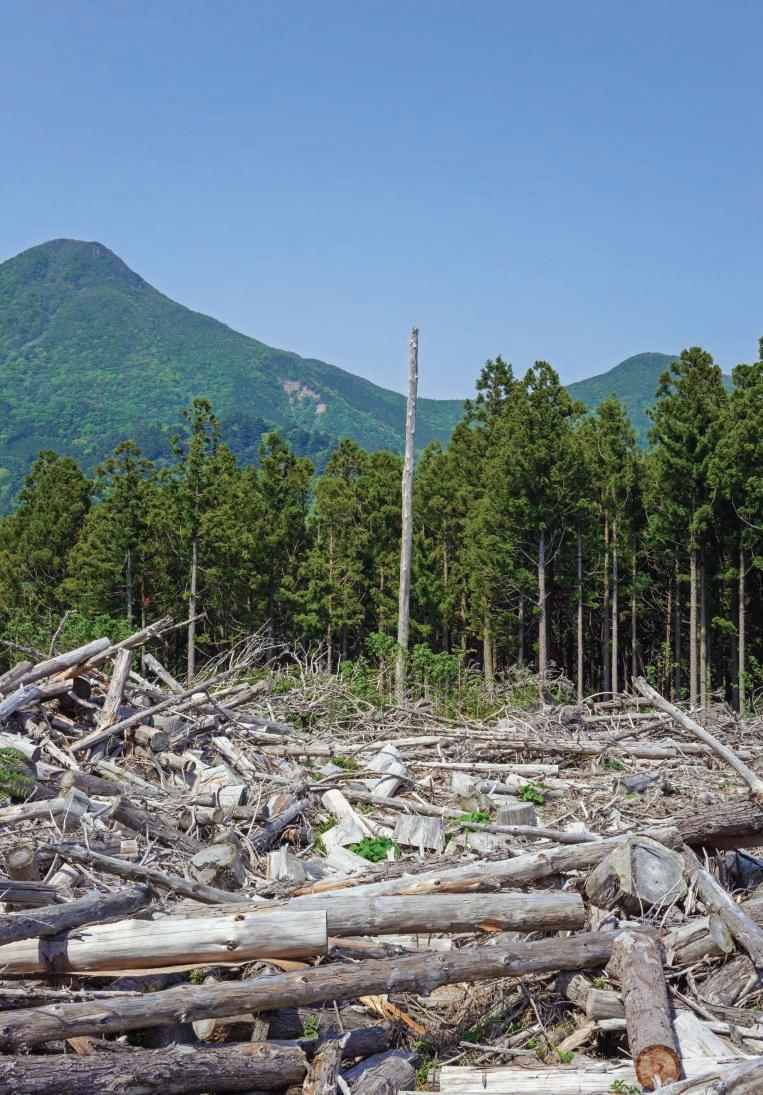
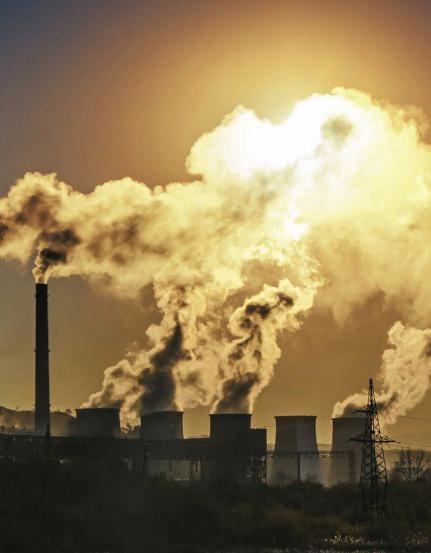
Around 40 per cent of
plant species could become extinct.
All around the world, people are trying to protect plants. New forests have been planted in many countries, including China, Australia and India.
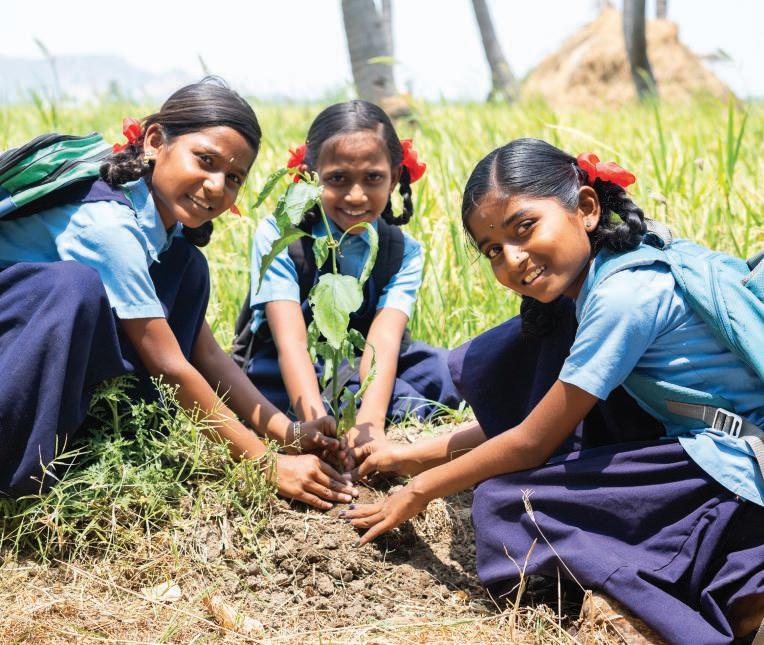

How could you help to protect plants where you live? THINK ABOUT IT!
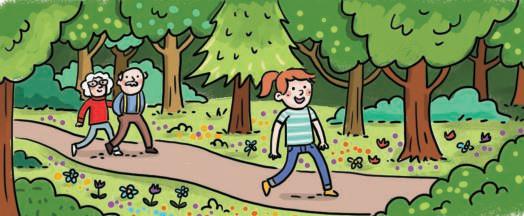
Stay on paths so you don’t trample plants.
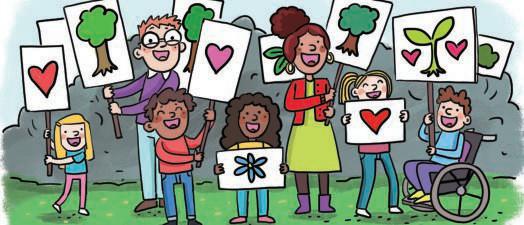
Encourage people not to damage plant life.
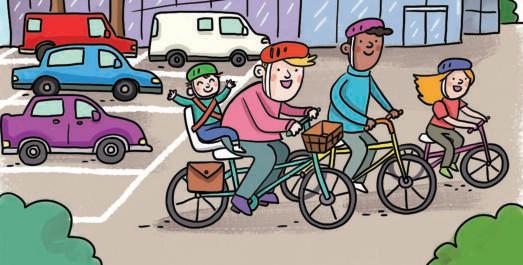
Walk or cycle instead of using the car.
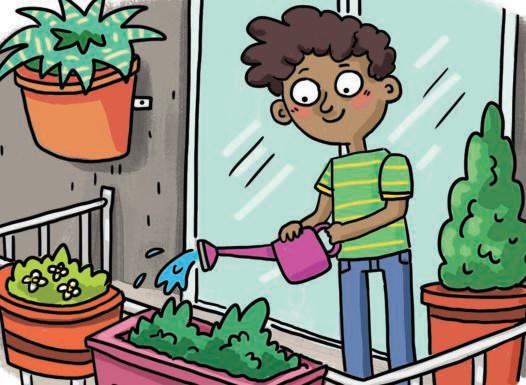
Grow plants.
People and the planet are facing many challenges. Plants and their amazing superpowers can help. We can help plants, too!
carbon dioxide: a colourless gas made by humans and animals breathing
edible: able to be eaten
extinct: an animal or bird is extinct if there are no examples of it alive
fossil fuels: fuels that are dug up from underground and burned to make energy
laboratory: a room or building with equipment for scientists to use
nectar: sugary liquid made by flowers to attract insects and bees
nuclear power plant: a factory that creates electricity, using the heat from something called a nuclear reaction
radioactive: giving out a dangerous form of energy called radiation
species: a group of animals or plants that are similar
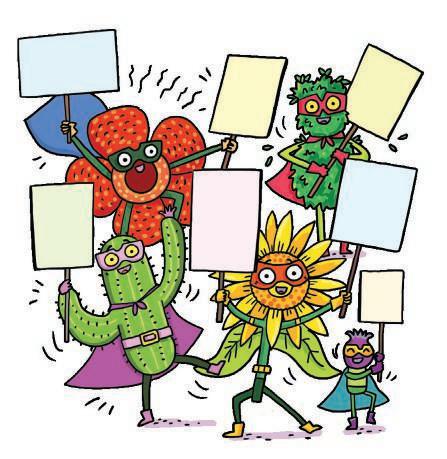

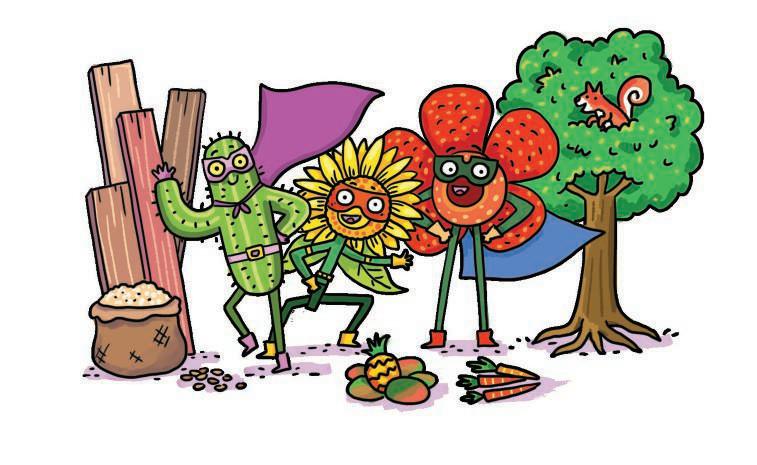

1. Why are plants important for the survival of the planet and humans?
2. How do some plants protect themselves from danger?
3. What or who do you think is the biggest risk to plants?
4. How can you help protect the plants where you live?
5. Which is the most important fact you’ve learned from this book?

A palm tree!

Here is a short play script called Superplants to the Rescue.
First, read through the play script in your head. Then, find a friend to read it out loud with you.
Think about which voice to use for each superhero. Think about how to express the superheroes’ feelings.

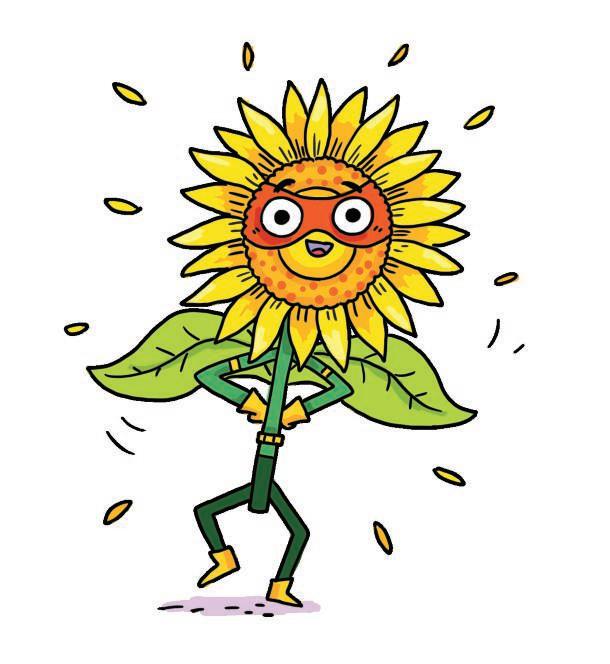
Superhero 1: There’s a problem with radioactive waste. How can we help?
Superhero 2: I’ve got just the thing. Let’s plant these packets of sunflower seeds! They’ll grow and help clean the soil.

Superhero 1: Perfect! Next, some scientists want to cure a deadly illness.
Superhero 2: I know! They’re near the rainforest. Let ’s send them there. Many life-saving medicines are found in rainforest plants.
Superhero 1: Great idea! The final challenge for today … a town is at risk of flooding in the future.
Superhero 2: Trees are the solution. They ’ll absorb some of the excess water.
Superhero 1: Good job!

1. Perform the play with your friend. Try using different types of voice to make the play exciting. You could speak quickly, slowly, softly or loudly.
2. After performing the play, try writing some more dialogue to continue the conversation between the superheroes. Use the facts you’ve read to come up with ideas.
3. Then try memorizing the play so that you can perform it without the book.



Look for this book next: The Rap Lesson
I am a neurodivergent author living in Shropshire. I think all plants are incredible! My favourite tree is an oak and my favourite flowering plants are forget-me-nots. I also love blossom trees in the spring!
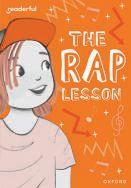
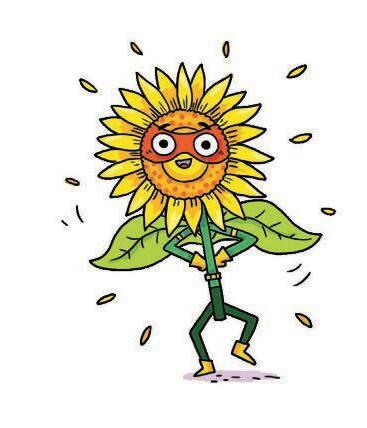
web www.oxfordprimary.com email primary.enquiries@oup.com tel +44 (0)1536 452610